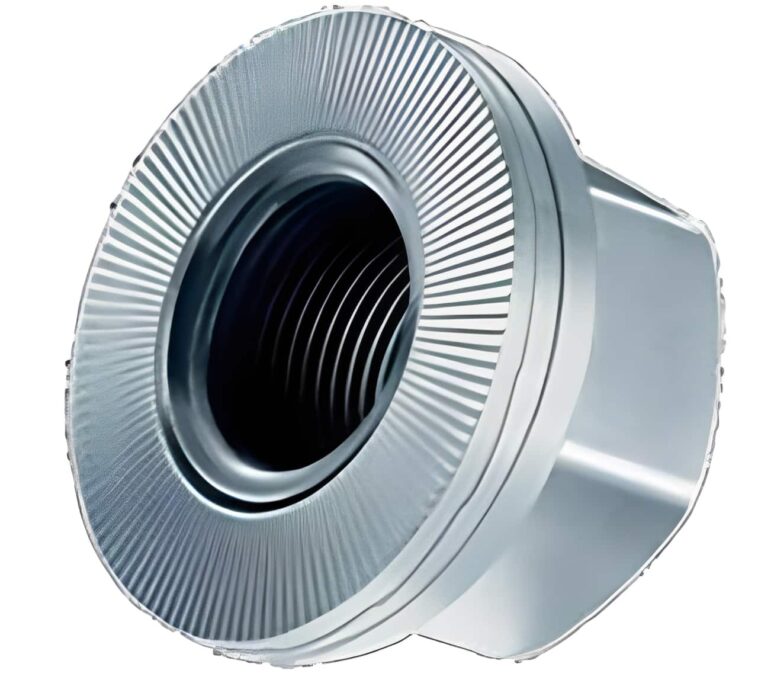Introduction
Locking nuts are an essential component in various industries, including automotive, aerospace, construction, and manufacturing. These specialized nuts are designed to resist loosening caused by vibrations and torque, ensuring the stability and security of fastened components. In this comprehensive guide, we will explore the different types of locking nuts, their applications, advantages, and tips for selecting the right one for your needs.
What Are Locking Nuts?
Locking nuts, also known as self-locking nuts, are fasteners designed to prevent unintentional loosening under stress, vibration, or thermal expansion. Unlike standard nuts, which rely solely on friction to stay in place, locking nuts incorporate additional mechanisms such as nylon inserts, deformed threads, or metal patches to enhance their holding power.
Types of Locking Nuts
There are several types of locking nuts, each suited for different applications and requirements. Below are the most common types:
1. Nylon Insert Lock Nuts
Nylon insert lock nuts contain a nylon ring inside the nut’s thread, which creates resistance against loosening. This type is commonly used in machinery, automotive, and light industrial applications due to its cost-effectiveness and ease of installation.
Advantages:
-
High resistance to vibration
-
Reusable for a limited number of times
-
No need for additional locking devices
2. All-Metal Lock Nuts
All-metal lock nuts achieve their locking capability through physical deformations in their metal structure, such as distorted threads or slots. These nuts are widely used in high-temperature and high-pressure environments where nylon inserts would fail.
Advantages:
-
High durability and strength
-
Suitable for extreme temperatures
-
Ideal for heavy-duty applications
3. Prevailing Torque Lock Nuts
Prevailing torque lock nuts use an interference fit between the nut and bolt threads, creating resistance against loosening. These nuts are often employed in environments exposed to constant vibration, such as transportation and heavy machinery.
Advantages:
-
Reliable in vibration-prone environments
-
Can withstand significant mechanical stress
-
There is no need for additional locking mechanisms
4. Castellated Nuts
Castellated nuts feature notches (or “castles”) on their top, allowing them to be secured with a cotter pin. This type is common in automotive and aerospace applications, particularly for obtaining wheel hubs and suspension components.
Advantages:
-
Excellent resistance to loosening
-
Easily adjustable and removable
-
Frequently used in safety-critical applications
5. Flange Lock Nuts
Flange lock nuts come with an integrated washer-like flange that distributes the load and enhances grip. These are frequently used in automotive applications and construction projects where a wide-bearing surface is beneficial.
Advantages:
-
It provides a secure grip without additional washers
-
Even the distribution of pressure
-
Effective in reducing vibrations
Applications of Locking Nuts
Locking nuts are used in a wide range of industries and applications to ensure reliable fastening. Some of the key areas where they are essential include:
-
Automotive Industry: Locking nuts are used in vehicle assembly, suspension systems, and wheel fastenings to withstand continuous vibrations and road impacts.
-
Aerospace Sector: Aircraft components require high-strength locking nuts to maintain secure connections under extreme pressures and temperature variations.
-
Construction Industry: From bridges to high-rise buildings, locking nuts ensure structural stability by preventing joint failures due to mechanical loads.
-
Manufacturing and Machinery: Machines with moving parts and high-speed operations require locking nuts to keep components securely in place.
-
Electronics and Appliances: Smaller locking nuts are used in electronic devices and appliances to prevent loose connections that could impact performance.
Advantages of Using Locking Nuts
Locking nuts offers multiple benefits compared to standard nuts, making them a preferred choice in various engineering applications. Some key advantages include:
-
Enhanced Security: Their self-locking mechanism minimizes the risk of accidental loosening, ensuring safety and stability.
-
Vibration Resistance: Designed to withstand continuous vibrations, they are ideal for dynamic applications.
-
Long-Lasting Performance: Made from durable materials, locking nuts maintain their effectiveness over extended periods.
-
Variety of Options: With different types available, you can choose the best locking nut based on specific application needs.
-
Cost-Effective Solution: They reduce the need for frequent maintenance and replacements, lowering overall operational costs.
How to Choose the Right Locking Nut
Selecting the proper locking nut is crucial for ensuring reliability and performance. Consider the following factors when choosing one:
-
Application Requirements: Identify the environment and stress factors affecting the nut.
-
Material Selection: Choose materials like stainless steel for corrosion resistance or high-strength alloys for heavy-duty use.
-
Thread Compatibility: Ensure proper fitment with the corresponding bolt to avoid misalignment or thread stripping.
-
Temperature Tolerance: For high-temperature applications, opt for metal locking nuts instead of nylon-based options.
-
Load Capacity: Consider the nut’s ability to withstand mechanical loads without deformation.
Installation Tips for Locking Nuts
Proper installation of locking nuts is essential to maximize their effectiveness. Here are some tips:
-
Use the Correct Tools: Depending on the type of nut, use torque wrenches or specialized tools to ensure proper tightening.
-
Do Not Over-Tighten: Excessive force can damage the locking mechanism, reducing its effectiveness.
-
Follow Manufacturer Guidelines: Each type of locking nut has specific installation instructions—always adhere to them.
-
Check for Reusability: Some locking nuts, such as nylon insert nuts, have limited reusability and should be replaced after a few uses.
-
Inspect Regularly: Periodically check for wear and tear, especially in high-stress environments, and replace when necessary.
Conclusion
Locking nuts plays a vital role in securing fasteners in diverse applications, from automobiles to industrial machinery. Their ability to prevent loosening due to vibration and stress makes them indispensable in modern engineering. By understanding the different types of locking nuts, their benefits, and best practices for selection and installation, you can ensure optimal performance and safety in your projects. Investing in the proper locking nut today can save you from costly maintenance and potential hazards in the future.
This post was created with our nice and easy submission form. Create your post!





